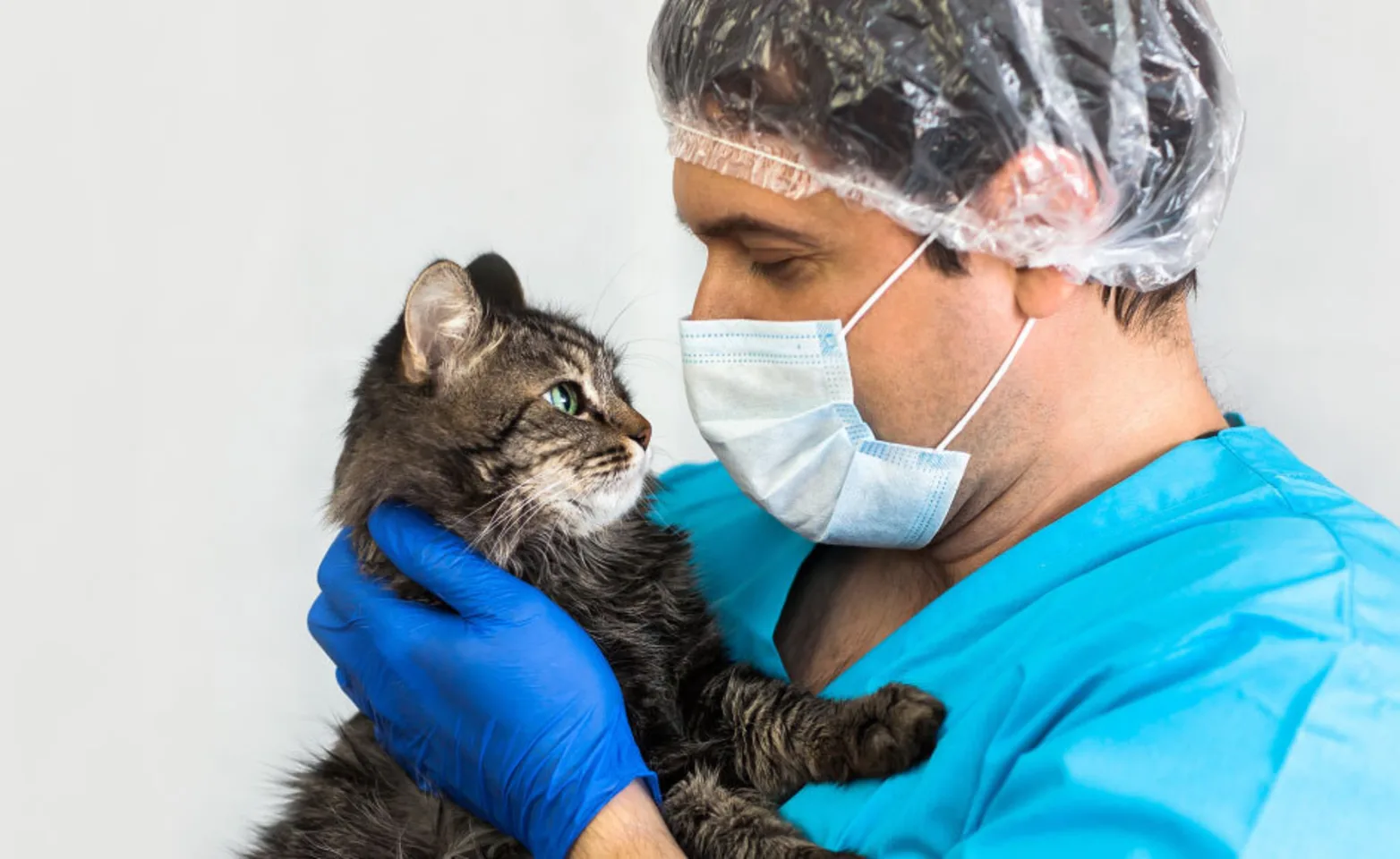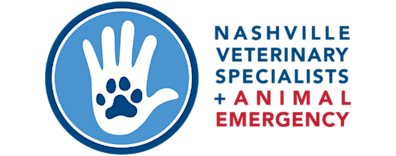Nashville Veterinary Specialists
Gall Bladder Mucocele in the Dog- Diagnosis and Medical Management
Information produced by Julie Stegeman, DVM, DACVIM, Nashville Veterinary Specialists - Clarksville
A mucocele is simply the distension of a cavity due to accumulation of mucus. A gall bladder mucocele is a gall bladder that is filled with and distended by thick mucinous material that is typically dark green and rubbery in texture, composed of many layers of inspissated mucus. The accumulation of this material over time puts pressure on the gall bladder wall, and can cause pressure necrosis, which can lead to rupture, and bile peritonitis. A gall bladder mucocele may be sterile or infected. The mucus accumulation can also extend into the cystic duct, common bile duct, and hepatic ducts. The end result is extrahepatic biliary obstruction, and ultimately is usually a surgically treated disease. This article will review diagnosis and medical management on the condition.

Gall bladder mucoceles have been reported with increasing frequency in recent years. It is not clear if this is simply due to increased awareness and increased use of ultrasound in clinical practice, or if there are changes in genetics and nutrition contributing as well. The condition was first described in 1965 in a case series of findings on necropsy. After that, there was sporadic mention of the condition in internal medicine and pathology texts, as well as a few reports of biliary rupture due to gall bladder mucocele. In the mid 1990’s there was a spike in literature reports of the condition, and the past decade there have been many reports, usually case series, in mainstream journals. In fact, in a recent review of biliary tract rupture in dogs, half of the cases were due to mucocele. It is quite possible that mucoceles were previously lumped into other categories or descriptions, including mucinous hyperplasia, cystic mucinous hyperplasia, inspissated bile, mucinous cholecystitis, necrotizing cholecystitis, and cystic glandular cholecystitis.
In the past, biliary scintigraphy was more widely used to determine if biliary obstruction was present, as ultrasound was less available. In a report of two symptomatic dogs undergoing cholecystectomy in 1995, both dogs developed vomiting and icterus subsequent to surgery, which indicates that the condition is often associated with other liver pathology.
In earlier years, mucoceles were suspected to be due to bile duct obstruction. However, ligation of the common bile duct could not induce the condition. It has since been found that it is the result of a combination of cholestasis, increased absorption of water from the gall bladder lumen, gall bladder hypomotility, and overproduction of mucus by the gall bladder epithelium in an attempt to protect the gall bladder wall from the toxic and irritant effects of increasing concentrations of bile salts. Biliary sludge is a mixture of precipitated bile salts, bile pigments, and cholesterol crystals. It is differentiated from mucocele in part by the fact that it does sediment with gravity during the course of an ultrasound exam. While biliary sludge is a common finding on ultrasound, and usually is considered incidental, for some dogs it might be a risk factor for future mucocele development.
Certain breeds have a higher incidence of gall bladder mucocele, including Shelties, Cocker Spaniels, Miniature Schnauzers, and possibly Bichon Frise, Beagles, and some terrier breeds. There is no sex predilection, and the median age is nine years. Cats have not been reported to develop mucoceles. Interestingly, this appears to be a rare disease in people as well.
Associations have been found with high fat diets, hyperlipidemia, hypercholesterolemia, a weak link with hypothyroidism, but no link with diabetes mellitus. The biggest risk factor has been determined to be hyperadrenocorticism (and/or exogenous corticosteroid administration). In one case series, 23% of mucocele patients had Cushing’s disease. In a separate study, patients with hyperadrenocorticism had 29 times the risk for biliary mucocele formation compared to normal dogs. It is not yet known whether this is a result of the effects of corticosteroids on gall bladder motility or bile salt composition. However, all dogs diagnosed with gall bladder mucocele should be screened for hyperadrenocorticism, hypothyroidism, and dyslipidemia.
Clinical signs can range from asymptomatic, to vomiting, anorexia, lethargy, abdominal pain, polydipsia, possible fever, and possible icterus. Laboratory evaluation will typically show elevated liver enzymes, sometimes with extreme increases in ALKP and GGT, and usually a parallel increase in ALT and AST. About half have hyperbilirubinemia and about ¾ have hypercholesterolemia. Hyperlipidemia is also very common. Often pancreatitis is present concurrently. Leukocytosis and hypoalbuminemia may also be present.
To this point, differential diagnosis includes not only gall bladder mucocele, but also pancreatitis with extrahepatic biliary obstruction, cholecystitis, acute hepatitis, and Leptospirosis.
Definitive diagnosis is usually made by ultrasound examination. The “classic” finding of a stellate hyperechoic inner pattern and hypoechoic thick outer layer (“kiwi fruit”) is only one variation on the theme. Generally, any time there is hyperplasia and thickening of the mucosa with adherent clumped mucus, and non-motile hyperechoic bile completely filling the rest of the gall bladder, it can be considered a mucocele. The “kiwi fruit” appearance is only seen with the most mature mucoceles.
Ultrasound is also 86% sensitive to detect biliary rupture. This can be seen directly as a defect in the gall bladder wall, or more commonly, a slightly “wrinkled” gall bladder with the typical hypoechoic thick wall, free abdominal fluid, and hyperechoic reactive mesentery in the area of the hepatic hilus and gall bladder. Confirmation can be aided by comparing the serum bilirubin to the bilirubin in the abdominal fluid (the latter is much higher in bile peritonitis). It is also possible to see clumps of the laminated mucin which stain deeply basophilic with in house cytology stains.
Treatment of gall bladder mucocele is cholecystectomy whenever possible. This is also prudent for many asymptomatic patients, depending on the individual case. If the gall bladder has ruptured, prognosis is typically worse for survival. Gall bladder mucoceles may also be infected, and it is a MUST to obtain both aerobic and anaerobic cultures of the bile at the time of surgery. The most common organisms isolated include Enterobacter, Enterococcus, E coli, Staph and Strep spp. Empiric antibiotic therapy should be started pending cultures. This should be directed against enteric gram negatives as well as anaerobes. For example, use a third generation cephalosporin or fluoroquinolone, combined with metronidazole. Another option is Clavamox (or timentin) alone. We recently had a dog that had received a series of antibiotics for cholecystitis and early mucocele, who eventually did go to surgery due to lack of response, and was found to have a methicillin resistant Staph pseudointermedius in the gall bladder. If the bile culture is positive, appropriate antibiotic therapy should be continued several weeks postoperatively.
Postoperatively, approx. 1/3 of patients will continue to have a dilated common bile duct. Pancreatitis is also a concern for many patients pre- and post-operatively. Once recovered, I generally advise long term therapy with ursodiol 10-15 mg/kg/day with food, and a low fat diet. Also, it is important to manage any endocrinopathies or dyslipidemia present.
Commonly, liver biopsies obtained at the time of surgery indicate biliary hyperplasia, suppurative cholangitis, periportal hepatitis, and /or periportal fibrosis. If there is any evidence of active inflammation, it is possible that this inflammation could continue postoperatively. It is vital to follow liver enzymes until they either normalize or plateau. If they remain significantly elevated without an alternative explanation, anti-inflammatory or immune modulating therapy may be indicated (azathioprine, chlorambucil, cyclosporine, or low dose steroids).
Medical management of gall bladder mucocele is only advisable if surgery is either too high of risk or simply not an option for the owner, in a stable patient with an intact gall bladder. The owner needs to be advised that this is NOT the ideal option, and there is risk of progression and bile peritonitis if it does not go well. Recommendations include high dose ursodiol (20-30 mg/kg/day), high dose S-adenosyl-methionine (30 -40 mg/kg/day), along with a low fat diet. In the case of attempting medical therapy, it is even more important to control hyperadrenocorticism , hypothyroidism, and hyperlipidemia. Frequent follow-up with ultrasound, chemistry and CBC is a must. If no progress is made after 3-4 months, or if the patient worsens in any way, surgery should be pursued if at all possible.
It may become possible to screen at least some dogs for risk of mucocele based on genetic testing. A mutation in the gene encoding a protein designated “ABCB4” has been identified in Shelties and some other dogs with mucoceles, and it is significantly associated with development of mucocele. It is transmitted in a dominant fashion with incomplete penetrance. ABCB4 is a phospholipid translocator. It translocates phosphatidlycholine from the cytosol of the hepatocyte, across the cell membrane and into the bile canalicular lumen, where it combines with bile salts to form micelles. These solubilize the otherwise toxic and irritating bile salts. Thus, a deficiency of phosphatidylcholine leads to increased bile salt concentration in the gall bladder lumen, which triggers hyperplasia of the mucus secreting cells, and increased mucus production into the gall bladder lining. In the future, it might be possible to screen at-risk breeds as well as dogs with Cushing’s or dyslipidemias for this genetic mutation, and follow these pre-emptively on ultrasound.
In the future, as our understanding of this unusual condition grows, we hope to improve detection and management, and hopefully therefore outcomes.
